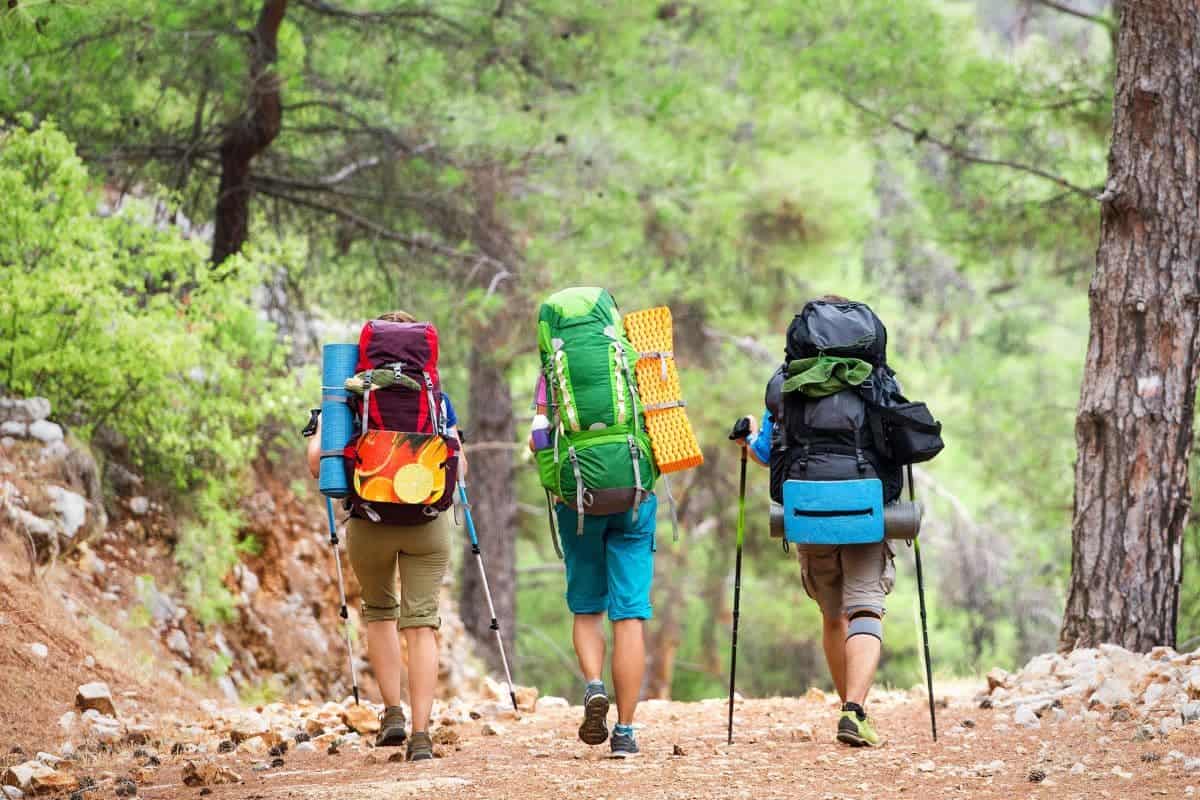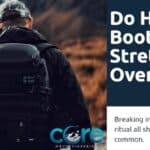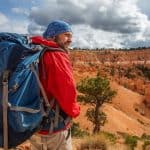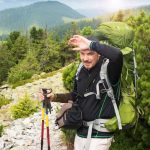Week long backpacking trips can be one of the coolest things you’ll ever do on all your treks. And, it’s worth the all the trouble.
Packing and getting everything ready for a week might seem overwhelming, but with the right preparation, you can make this challenge into a memorable adventure.
This guide will get you ready and walk you through everything. Choosing the perfect route involves considering your fitness level, the season, and what you want to see, ensuring your trip is as safe as it is enjoyable. Let’s get into it!
Key Takeaways
- Careful planning is crucial for a successful week long backpacking trip.
- Select gear that balances comfort, functionality, and weight.
- A respectful understanding of trail etiquette preserves the experience for everyone.
Choosing Your Trail
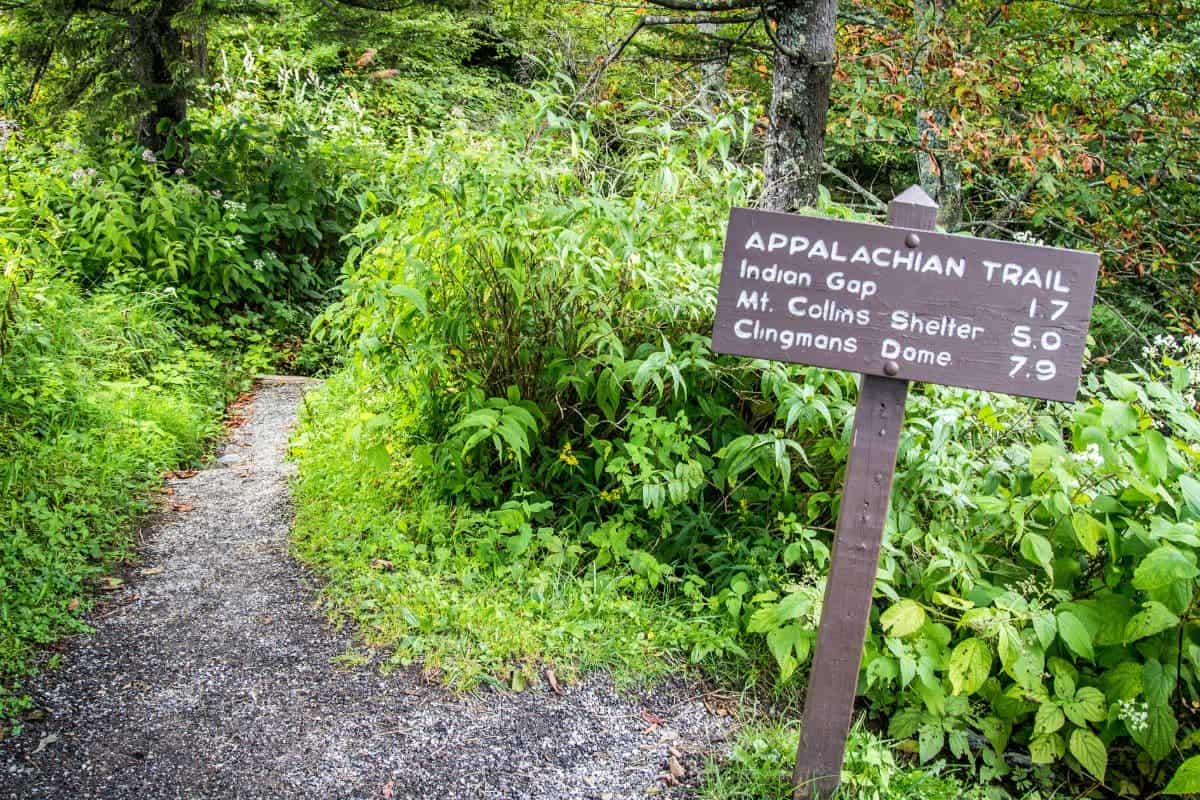
First thing first, you’ll want to find a trail that matches your interests and fitness level.
You’ll have to consider the trail’s location, length, difficulty, and the type of scenery you want to see.
Famous Long Trails
Here’s some ideas if you’re looking for a location on long hikes.
The Appalachian Trail and the Pacific Crest Trail are iconic choices that offer a slice of some of America’s best backcountry. Sections of these trails can be hiked in a week:
- Appalachian Trail: Traverse diverse landscapes from woods to mountaintops. For a scenic section, consider the stretch in New England’s Northeast.
- Pacific Crest Trail: Experience the Pacific Northwest’s stunning views. A segment in Washington’s North Cascades National Park could be a perfect pick.
Regional Trail Highlights
Depending on the region you’re looking to explore, several trails offer unique natural features:
- Northeast: The 100-mile Wilderness in Maine runs from Monson to Baxter State Park and presents a remote, forested experience.
- Rocky Mountains: Continental Divide Trail provides high-elevation adventures with ample alpine scenery.
- West Coast: Trails in Olympic National Park or Yosemite offer coastal vistas and iconic rocky landscapes.
For immersive experiences in certain climates:
- Pacific Northwest: Wonderland Trail in Mount Rainier National Park circles the mountain and showcases diverse ecosystems.
- Southwest: Zion National Park trails guide you through dramatic canyons and rock formations.
Trail Difficulty and Terrain
Examining the trail’s difficulty and terrain is crucial:
- Wonderland Trail: It covers 93 miles as a loop, demanding a wilderness permit for the full journey.
- 100-Mile Wilderness: At 100 miles, it provides sections that are surprisingly flat and fast, but overall, it’s a moderate to strenuous hike.
Choose a trail that aligns with your comfort level:
- Easy: Look for flat, well-defined trails possibly in Glacier or Zion National Park.
- Strenuous: Be ready for elevation gains and rocky paths on trails like those in Rocky Mountain National Park.
Essential Gear for Long Treks
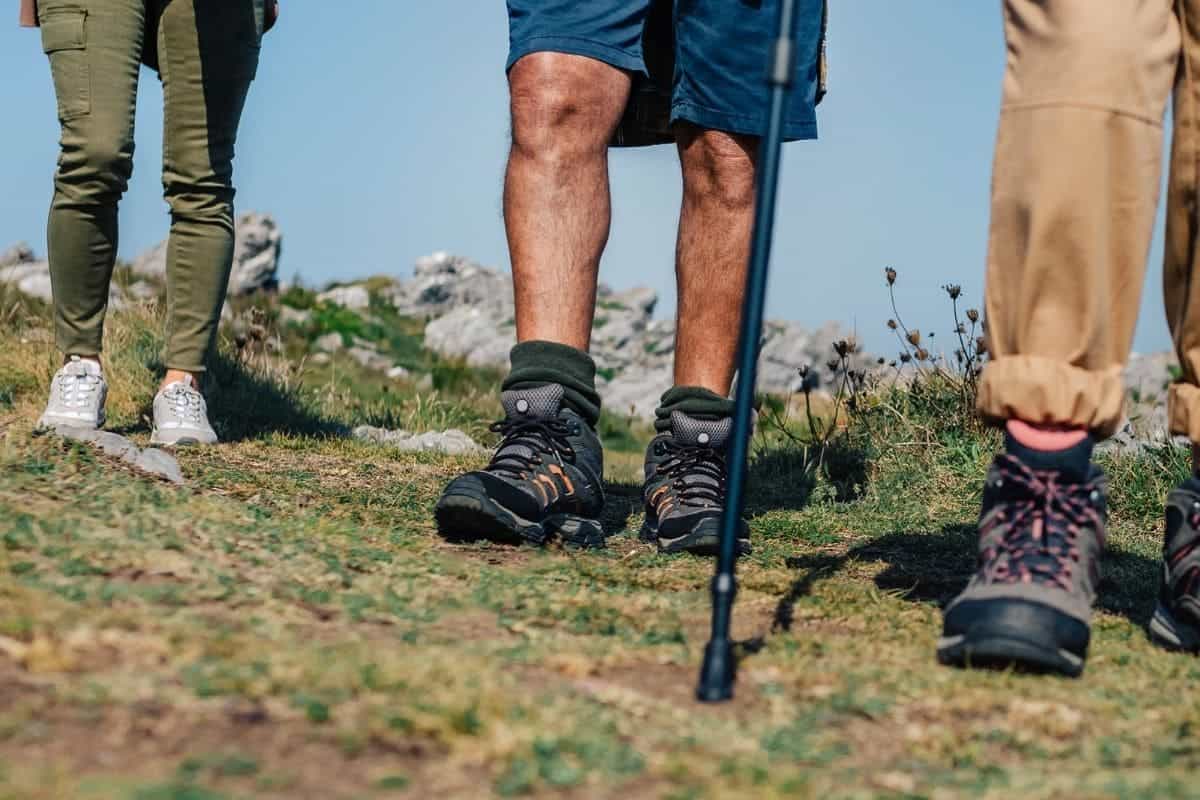
Backpacks and Packing
Your backpack is your home on the trail.
If you can afford it, opt for a lightweight model that can comfortably carry all your essentials without unnecessary heft. Ensure it has enough compartments for easy organization.
Here’s our guide on how to choose the best backpack if you don’t have one yet.
Here’s a quick packing list guideline:
| Items | Essentials |
|---|---|
| Clothing | Pack essential items only, focus on layering. Include moisture-wicking shirts, pants, insulated layers, rain gear, and a hat. |
| Footwear | Select durable, supportive hiking boots or shoes with good traction. |
| Trekking poles | Invaluable for balance and reducing knee impact. |
Shelter and Comfort
Your shelter is critical for those overnight stops, so selection is key.
| Items | Essentials |
|---|---|
| Tent | A lightweight, weather-resistant tent with a footprint. Choose one that’s easy to set up and pack down. Crucial for protection and comfort. |
| Sleeping pad | Provides insulation from the cold ground and cushioning. Opt for an ultralight model to minimize weight. |
| Sleeping bag | Select an ultralight bag suitable for the hiking season. Down-filled bags provide excellent warmth-to-weight ratio. |
Navigation and Tools
Your packing should strike a balance between preparedness and efficiency, ensuring you only carry what you need for a safe and enjoyable adventure.
So, don’t get lost out there – proper navigation is vital and so are the right tools.
| Item | Essentials |
|---|---|
| Map and compass | Traditional navigation tools that don’t rely on battery power, essential for orientation. |
| Multi-tool | A basic multi-tool can be crucial for minor repairs and unexpected needs in the wilderness. |
Food and Water Management
When you’re backpacking for a week, you need to be smart about your food and water—plan how you’ll cook your meals and where you’ll get your water.
Cooking Strategies
CoreM Pro-Tip: Do the best you can and look for non-perishable, lightweight, and calorie-dense food items to sustain your energy without weighing down your backpack.
Your eating plan should mix carbohydrates, proteins, and fats to keep up your energy. Items like bars, dried fruits, and nuts make for great snacks.
For meals, consider easy-to-cook options such as dehydrated meals that only require adding hot water.
- Breakfast: Instant oatmeal, coffee, dehydrated fruits
- Lunch: Tortilla wraps with nut butter, jerky, trail mix
- Dinner: Packaged dehydrated meals, instant noodles or rice
Additionally, keep your cooking gear simple. A small, lightweight stove with a single pot can serve most of your cooking needs. But remember, you’ll need to carry enough fuel for the entire trip if you can’t reliably build a fire.
Water Treatment and Sources
Always have a plan for where you’ll be getting your next water refill. Streams, lakes, and springs can serve as water sources, but remember, you’ll need to treat the water to make it safe to drink.
Boil water for at least one minute, use water purification tablets or drops, or filter the water with a pump or gravity filter system.
If you’re a fan of fishing and your route has lakes or rivers, you can supplement your meals with fish. Ensure you have the necessary fishing permits and are aware of catch-and-release regulations.
Keep in mind that carrying water adds significant weight, so it’s necessary to evenly distribute your load and be aware of your weight limits.
Understanding the Backcountry
Camping Permits and Regulations
Backcountry camping often requires a permit, especially in popular hiking areas like Glacier National Park. It’s not just about finding a spot and setting up camp; you need to follow specific regulations that help manage these natural areas.
For instance, the North Circle Loop in Montana requires you to reserve a backcountry permit through sites like recreation.gov or at a ranger station.
How to Reserve?
Online or walk-in at ranger stations
Why Permits are Necessary?
To protect the environment and ensure your safety
Wildlife and Safety
Your time in the back country might include encounters with wildlife like mountain goats, bears, marmots, deer, and even wolves. It’s a privilege to experience these animals in their natural habitat, but it also comes with responsibility.
Here are some tips:
- Store your food properly to avoid attracting bears.
- Keep a respectful distance from wildlife, like the often curious marmots or deer.
- Learn about the presence of mosquitoes and consider wearing rain gear as protection.
Physical Preparation

Fitness and Training
Cardiovascular Endurance
Build endurance with regular cardio sessions. Start with 60-minute hikes carrying a pack at 80% of your trip weight, and include four sessions a week as your trip approaches.
Strength Training
Squats, lunges, and step-ups will build the leg and core strength you need. Begin with a 20-pound pack and incrementally add weight, aiming for a series of 700 steps in less than 30 minutes.
Health and Safety Tips
Hydration and Nutrition
Forget the energy drinks; water’s your new party favorite. Hydration is critical to keeping your muscles moving and your brain sharp. For balanced nutrition, mix proteins, fats, and carbs into each meal.
Know Your Limits
Listen to your body’s whispers before they become screams.
CoreM Pro-Tip: If a climb feels too challenging, it’s okay to take breaks or alter your route. Pushing through pain is not a badge of honor; it’s a direct route to injury. You don’t have to “push it”. That’s just dumb.
Trail Life and Etiquette
When you’re out on the trail, your experience is enhanced not just by the landscapes, but also by the interactions and choices you make.
Proper trail etiquette helps everyone have a more enjoyable time, and selecting the right campsite can make or break your night under the stars.
I have some opinions about trail etiquette. If you’ve never been out on the trail for a long time, you might be surprised.
Interacting with Other Hikers
Encounters with fellow hikers are part of the adventure. A few unwritten rules can make these interactions pleasant for everyone:
- Stay to the right; pass on the left
- Greet other hikers
- Let faster hikers pass
- Yield to uphill hikers
Campsite Selection and Setup
Picking out the perfect spot for your tent can make a big difference:
- Look for a flat area to avoid an uneven night’s sleep.
- To minimize your impact, choose sites with little to no vegetation.
- Set up at least 200 feet from lakes and streams to protect water quality.
- If you have neighbors, maintain a courteous distance from other campers.
- Be mindful of noise, especially once the sun sets.
After the Trail
Once you’ve returned from your backpacking excursion, the adventure isn’t quite over. Taking the time for proper recovery and reflecting on your journey is just as crucial as the hike itself.
Recovery and Reflection
Your body has endured a considerable amount of stress, so rest is essential. Also, prioritize a good night’s sleep and consider light activities, like walking or yoga, which can aid in muscle recovery.
Take a moment to think back on your trip. Jot down what went well and what didn’t—it’s a great way to learn from your experience.
Reflecting isn’t just about acknowledging your accomplishments, it’s also about understanding the challenges you faced and how you overcame them.
Sharing Your Experience
If you’re keen on letting friends and followers in on your adventure, social media can be a great platform. Post your favorite photos or write a brief recap of the journey.
You can also join online communities like Reddit’s r/backpacking or AllTrails’ community sections. It’s a good way to share tips and stories with fellow hiking enthusiasts. You never know, your insights might be just the news someone else needs for their upcoming trip.
If your trip had an interesting angle—say you were raising awareness for a cause or exploring lesser-known trails—consider sharing your story with local news outlets. Your unique perspective or the idea you pursued could inspire others.
Regional Trip Overviews
Trips in the Southwest and California
The Southwest US is known for its unique desert landscapes and national parks. Trails here often feature red rock formations and clear, starry nights.
- Grand Canyon, AZ: Immerse yourself in the grandeur of the Grand Canyon with a rim-to-rim hike, covering a distance of about 24 miles. Best attempted in spring or fall to avoid extreme temperatures.
- John Muir Trail: Covering a distance of approximately 211 miles, this trail’s shorter segments offer a week-long hiking opportunity, with the most popular starting at Yosemite Valley and heading into the Ansel Adams Wilderness.
Adventures in the Pacific Northwest and Rocky Mountains
- Timberline Trail: Circling Mount Hood, this approximately 40-mile loop trail provides a mix of alpine vistas and waterfall views.
- Glacier National Park: Multiple trails, from the 65-mile Northern Loop to shorter segments, give you a taste of the Rockies with glacier-carved terrain and potential wildlife sightings.
Explorations in the Northeast and Southeast
For a secluded and challenging experience, Maine’s trails through dense forests and along rugged terrain call to the intrepid. Meanwhile, if you’re attracted to the lush landscapes and rolling mountains of the Southeast, Tennessee’s trails offer an escape into old-growth forests.
- 100-Mile Wilderness: A section of the Appalachian Trail, it runs from Monson to Baxter State Park with relatively flat, fast sections for a serene trip.
- Great Smoky Mountains National Park: Traverse a part of the Appalachian Trail that winds through this biodiverse region, or opt for a loop within the park for a week’s exploration.
Seasonal Things to Think About
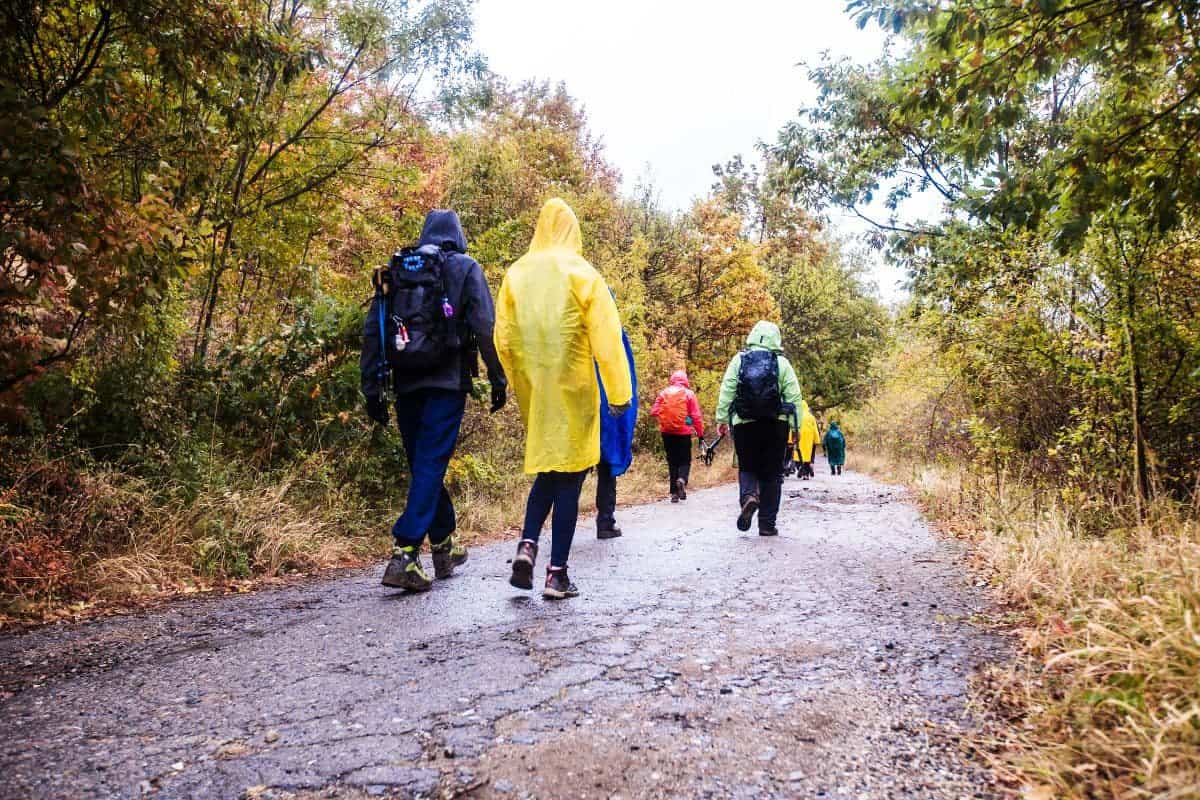
Be sure to account for early sunsets and often-overlooked dangers like avalanches. Staying warm and dry while maintaining your energy with high-calorie foods is the name of the game.
Summer
For you, this is all about managing heat and staying hydrated.
Lightweight tents and sleeping bags are key, and you wouldn’t want to forget your sunscreen and bug spray. Longer daylight hours mean more time to explore, but be mindful of afternoon thunderstorms.
Fall
Temperatures start to drop, and leaves begin to turn. It’s a beautiful time to hike, but be prepared for colder nights and unpredictable weather.
Pack layers that you can add or remove as necessary, and consider a warmer sleeping bag.
Winter
Your pack will be heavy with winter gear, and the days are short, so you need to plan your daylight hours carefully. A 4-season tent and a sleeping bag rated for cold temperatures are non-negotiable.
Snow can make navigation tough, so map-reading skills or a reliable GPS are crucial.
Extended Backpacking Challenges
Thru-Hiking Major Trails
Thru-hikes involve trekking the entirety of a long trail, often stretching hundreds of miles.
One notorious example is attempting the Triple Crown of Hiking, which includes the Appalachian Trail (AT), Pacific Crest Trail (PCT), and Continental Divide Trail (CDT).
| Trail | Distance |
|---|---|
| Appalachian Trail (AT) | Over 2,190 miles through the eastern United States. |
| Pacific Crest Trail (PCT) | Approximately 2,650 miles along the West Coast. |
| Continental Divide Trail (CDT) | Roughly 3,100 miles following the continental divide. |
Each of these trails presents unique difficulties, such as elevation changes, weather variations, and the need for strategic resupplying points.
Your stamina and resolve will be tested, and completing any of these is a badge of honor among backpacking enthusiasts.
Self-Sufficient Wilderness Treks
On self-sufficient wilderness treks, you’re far from civilization, meaning you carry everything you need to survive. This includes food, water purification systems, shelter, and emergency tools.
You’ll traverse through wilderness areas where finding your way can be quite challenging, and help in emergencies may not be easily accessible.
Here’s a quick checklist for wilderness treks:
- Calculate your daily caloric needs and pack lightweight, high-energy foods.
- Bring a reliable filtration system and know your water sources ahead of time.
- Opt for a lightweight, weather-appropriate tent or hammock.
- Always have a first-aid kit, multi-tool, and means to start a fire.
Technology and Planning Tools
Useful Apps and Online Resources
Stay updated with news on trail conditions, get expert tips, and find new routes with the Outside+ app. It’s your digital companion that can offer a wealth of information and inspiration for your backpacking journey.
- Access a large database of trails, complete with topographical maps and GPS features.
- Get real-time updates to ensure you’re prepared for what mother nature has in store.
- Learn from the community and engage with articles that can help you refine your backpacking skills.
One of the most popular trail-finder apps, AllTrails allows you to locate paths and track your hikes.
Take a look at user reviews to assess trail difficulty and ensure it’s right for your level of experience.
- Easily find trails near you or in the location you’re targeting for your backpacking trip.
- Record your hike, upload photos, and even add notes for future reference or to advise fellow hikers.
CoreM Pro-Tip: For remote adventures, utilize Gaia GPS for its detailed offline maps, ensuring you stay on track even when out of service range.
- Download maps in advance to stay on track without cell service.
- Customize your maps with layers for weather, topography, and more to get a comprehensive understanding of the terrain.
A dedicated weather app on your phone can provide up-to-date forecasts tailored for the specific regions you’ll be traveling through. Quick updates can help you avoid storms or prepare for sudden temperature changes
They provide detailed checklists and gear reviews that can save you time and hassle.
Photography and Journaling
Capturing the Journey
Consider a lightweight mirrorless camera or a high-end compact camera for the perfect blend of quality and portability.
Hiking and Camping Gear Tips:
- Extra batteries: You won’t find power outlets in the wilderness.
- Memory cards: More than one, because running out of space is not an option.
- Protective case: Keep your camera safe from the elements.
Furthermore, be on the lookout for unique lighting, especially during golden and blue hours. Don’t shy away from overcast days; the diffused light is great for capturing details without harsh shadows.
Documenting the Experience
You have options. Go traditional with a hardbound notebook, choose a waterproof journal for all-weather writing, or even a phone app that can double as a journal.
Journaling tips:
- Dedicate time: Either first thing in the morning or at the end of the day jot down your thoughts.
- Be descriptive: Note the details that photos can’t capture—the sounds, smells, and feelings of the day.
Your photographs bring your journal entries to life, providing a visual complement to your written word. Remember, your journal isn’t just a record; it’s a personal narrative of your adventure. Your photos are the snapshots of moments lived; together, they create a fuller story.
Frequently Asked Questions
How do I pack for a week-long backpacking journey?
Pack by prioritizing essentials like a shelter, sleeping bag, and appropriate clothing. Focus on lightweight, calorie-dense food and a reliable water treatment method.
What are some recommended destinations for week-long backpacking trips?
The 100-Mile Wilderness in Maine is perfect for those seeking solitude and a moderate to strenuous hike. Other destinations include the John Muir Trail in California or the Wonderland Trail, which offers a 93-mile loop around Mount Rainier with various environments to experience.
Can beginners manage week-long backpacking excursions, and if so, how?
Yes, with careful planning and preparation. Start with shorter trips close to home to build confidence and skill. Build up your endurance with regular hiking and learn to cross and set up camp efficiently before attempting a week-long trip.
What are the essential skills needed for week-long backpacking adventures?
Key skills include navigation, campsite selection, Leave No Trace principles, weather awareness, and first aid knowledge. Also, you should know how to manage food and water supplies and have a basic understanding of gear repair.
How do I choose the right gear for a multi-day trek in the wilderness?
Choose a backpack that fits well and can carry the necessary load. Invest in a lightweight tent, sleeping pad, and sleeping bag rated for the expected temperatures.
What are the best times of year to go on week-long backpacking trips?
Generally, late summer to early fall offers stable weather conditions and avoids issues with snow in higher elevations or extreme heat in desert areas. Always check historical weather patterns for your specific destination.
Final Thoughts – Plan The Right Gear and Trail On Your Next Backpacking Trip
A week-long backpacking trip is more than just a hike; it’s a chance to explore nature, challenge yourself, and learn from the experience. Therefore, choosing the right gear and trail is important to make the trip enjoyable and safe.
Along the way, respecting nature and following trail rules help ensure a good time and preserve the outdoors for others. After the trip, resting and thinking about what you’ve learned adds value to the adventure.
Ultimately, a week-long hike is a rewarding journey that combines adventure, respect for nature, and personal growth.

